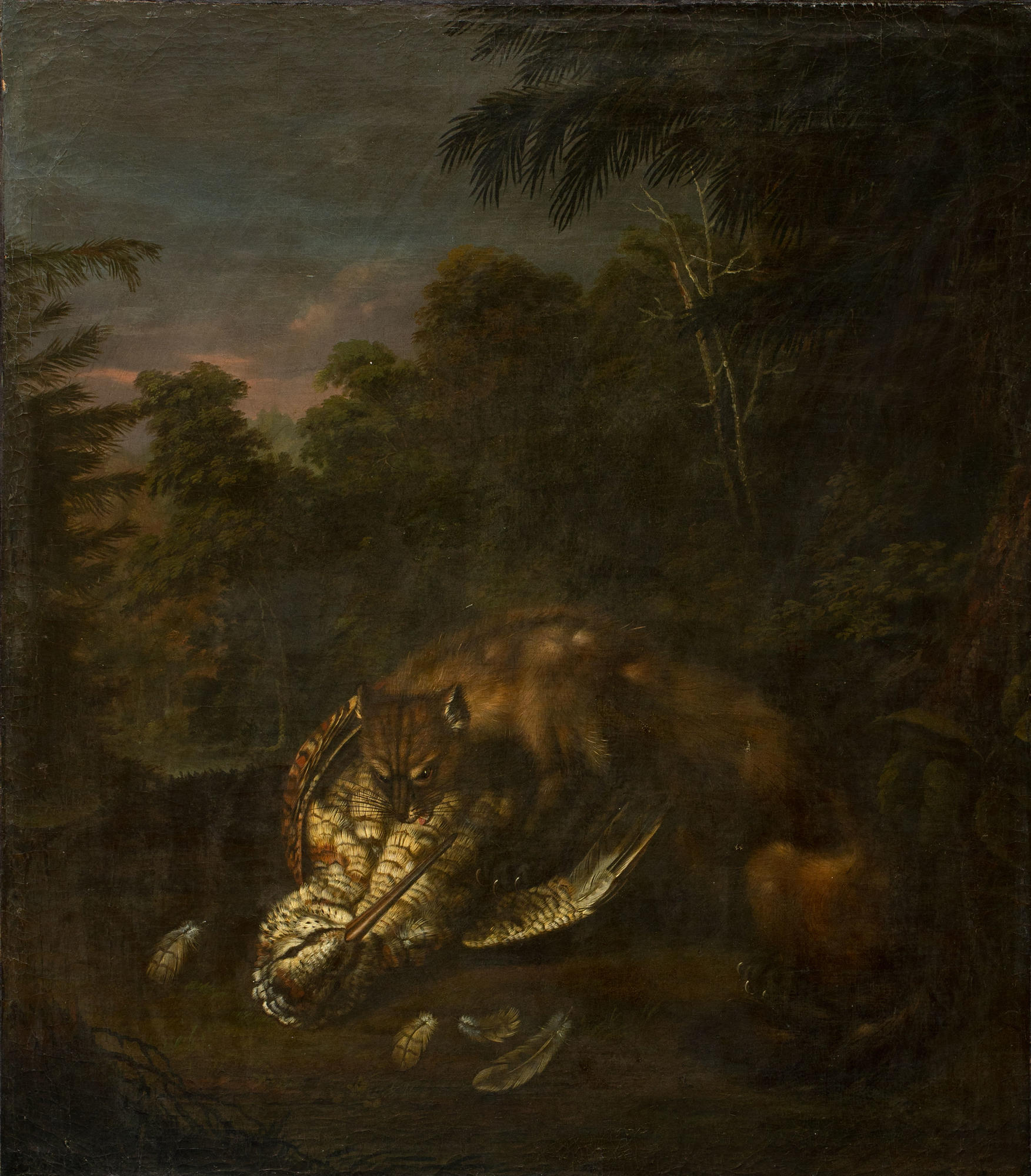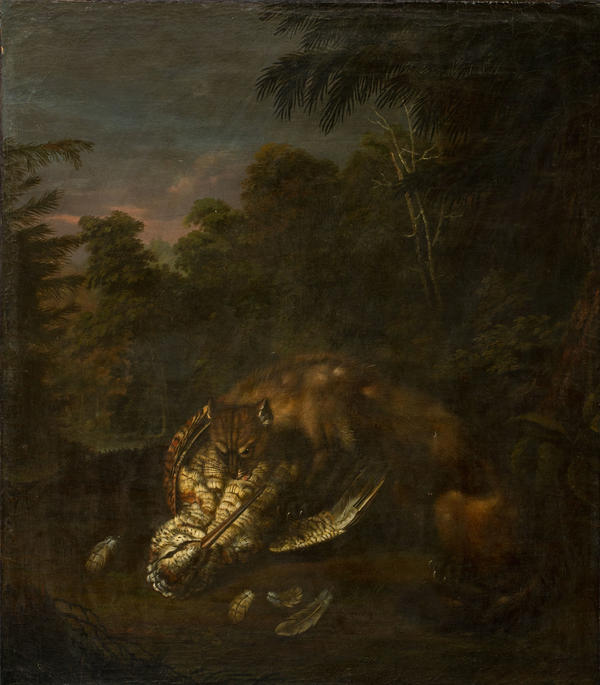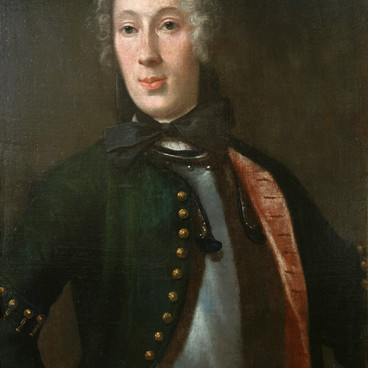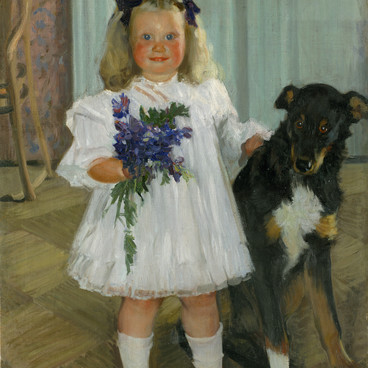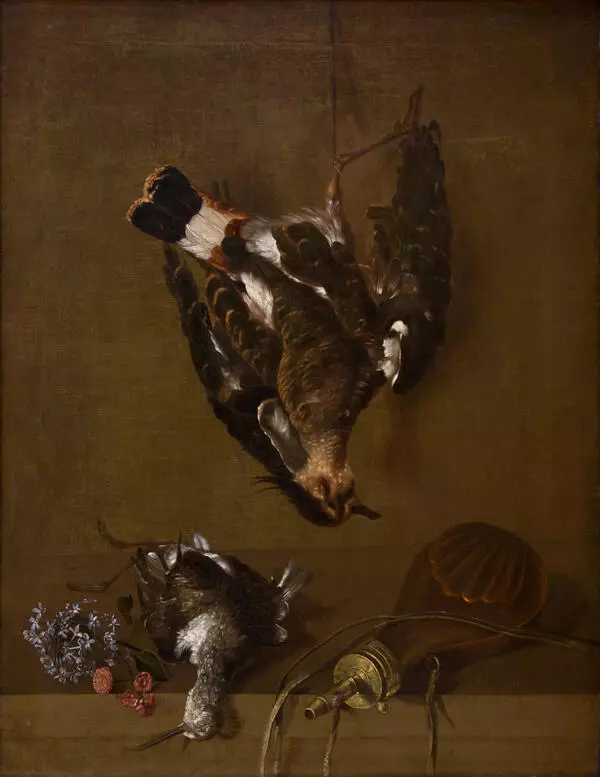The Marten and Woodcock painting was created by German animalist Johann Friedrich Groot. The year when the picture was completed is unknown. Johann Groot became the first artist in the Russian Empire who devoted his canvases to animals. He gave the animal genre an independent meaning. In this picture, the painter managed to accurately depict a bird and a predator. He not only conveyed the animals’ appearance, but also showed their nature.
#1
Johann Friedrich Grooth
Marten and Woodcock
#2
#3
For the picture, the artist chose a dark color scheme and warm hues. There are many ocher-brown and green flowers of different shades. The two animals in the foreground are surrounded by gloomy-looking trees. The forest looks like theatrical scenery. The defeated bird lies on the ground, and the marten sits on the chest of its prey triumphantly.
#4
The artist carefully traced the beast’s face. Its expression resembles human features.
#5
The bird depicted by the artist belongs to the snipe family. Woodcock was considered royal exquisite game. In ancient times, this bird was an object of sports hunting. Woodcock was particularly secretive, so it was hard to catch. The bird usually dwelt in deep forest thickets in solitude and showed itself at dusk.
#6
Johann Groot was born in 1717 in Stuttgart, Germany. He came from a family of hereditary artists. In his youth, the painter worked in Vienna under the supervision of his father Christoph Groot. In 1748, Johann Groot was invited to decorate the Monbijou hunting pavilion in Tsarskoye Selo. Empress Elizaveta Petrovna was an avid hunter. On her orders, the German artist depicted hunting scenes for the Grand Palace in Tsarskoye Selo.
#7
The Monbijou Pavilion, decorated with paintings, delighted the artist’s contemporaries and became a favorite vacation spot for Petersburgers. Count Mikhail Vorontsov mentioned it in his notes:
“We went through the garden to the menagerie, and for a long time watched the highly-praised Groot”s paintings’.
#8
Many prints were based on the plots depicted by Johann Friedrich Groot. The artist’s hunting series has become a unique phenomenon in the development of the animalistic genre of Russia. Soon this collection, the so-called Groot’s Gallery, was handed over to the Imperial Academy of Arts in St. Petersburg.
#9
In 1749, Empress Elizabeth of Russia appointed Johann Friedrich Groot the court painter. Seven years later, he became an academician of painting, and a year later he joined the Council of the Academy of Arts. In that educational institution, he led a workshop giving master classes of painting animals and birds. The German artist became the first teacher in the animal genre in the Russian Empire. His artistic heritage includes about a hundred paintings.
read morehide
00:00
00:00
1x
Marten and Woodcock
Dimensions
63x55 cm
Technique
Canvas, oil
Collection
Exhibition
4
Open in app
Share
